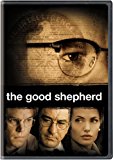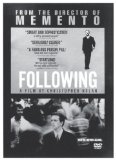Silver Streak
These are some personal reactions to the 1976 movie directed by Arthur Hiller.
Silver Streak is, in many ways, a typical ‘70s movie, with bad haircuts, ugly ties, too much kissing, a lot of shouting and a general sense of loudness.
At the center of all the bother is Gene Wilder in a role that, a couple of decades earlier, would have been ideal for Cary Grant. I have immense admiration for Wilder. Five years before Silver Streak he single-handedly turned Willy Wonka & the Chocolate Factory from an entertaining children’s fantasy into something deeply memorable, by adding layers of emotional subtlety and mystery. Nine years before, he showed a genius for comic teamwork with Zero Mostel in The Producers. Wilder’s onscreen presence is as odd and disturbing as Christopher Walken’s. Both men are aware of this, and can work with savvy directors, such as Abel Ferrara, to leverage their eccentricities. Here, Wilder is painfully out of place. He seems to have no interest in the romantic liaison that frames the movie, and allows himself to be led from dinner table to bed looking as if he’s just waiting for the real movie to start, as are we. The smarmy innuendo that makes up the couple’s dinner conversation makes one yearn for the comparative cleverness of ‘60s James Bond movies. This whole business will put a cramp in your cringe muscles.
The “plot” is silly, implausible, and not worth summarizing. The minor characters are all crude, cartoon caricatures: the illiterate small-town police chief and his even stupider nephew-deputy; the laconic, manly, federal agent; the drunken conventioneers wearing novelty hats; the wisecracking gangsters.
Eventually, Wilder’s character joins forces with a small-time thief played by Richard Pryor. The two would eventually develop a chemistry that would carry them through several films, but that chemistry is not evident here, although the director has them stare into each other’s eyes, unaccountably, for so long that it began to look as if Wilder had finally found his romantic motivation. It was not to be. We were, however, treated to Wilder pretending to be a black man, with the assistance of shoe polish, a very ‘70s hat, and a portable radio held to the side of his face. He does, after all, have something like an afro. It probably doesn’t need saying that nothing about this extended sequence was remotely humorous; but somebody should have gotten this message to the filmmakers, who intended this as their comic centerpiece. The only thing that keeps the bit from being over-the-top racist is that its satirical target was white people, rather than black people, and the idea for the impersonation, designed to help Wilder’s character from being recognized by the police, was that of his black co-conspirator.
Now that we’ve summarized the worst parts of this messy jumble of a movie, let’s note what was good about it.
The director, or someone behind this production, clearly has a love of America’s scenic West. There are several leisurely shots of the fateful train chugging along its tracks of destiny, with the desert or the snowy Rockies as the backdrop. The scenes of Wilder walking dejectedly along the tracks are carefully composed. These restful interludes are a welcome break from the hysterical machinery of the plot.
Any film that manages to convince the formidable Patrick McGoohan to participate is worth a look. Here he is almost as out of place as Wilder, simply because he is so good that he seems to have floated in from a real movie by mistake. The craft that he brings to his portrayal is on such a higher level than the business going on around him that the contrast makes it all look even shabbier. Pay attention to McGoohan’s careful calibration of tone and expression; to how he stretches a pause after a line to the perfect length before erupting in a sharp word or action. His presence splits the movie into two: the scenes without McGoohan, and the (too) few with him.
This movie might just be worth sitting through for the good parts, which, in addition to these, include some genuinely suspenseful action bits, with the actors doing many of the stunts themselves, and some impressive structural damage near the end. Sitting through the bad parts will require the assistance of something along the lines of a double martini. Or two.



